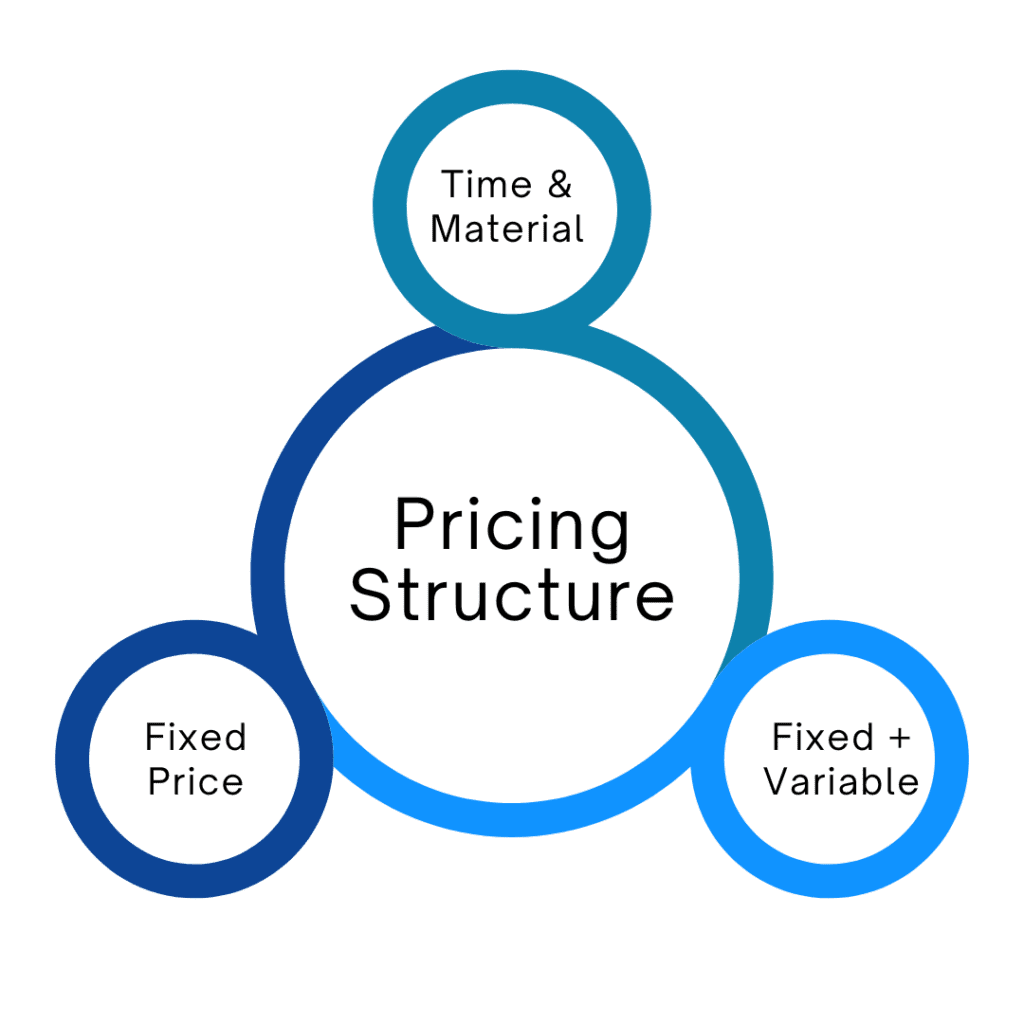Governing IT Outsourcing for Results
04 September 2024
I was recently asked by a client, what is the best governance model to follow while outsourcing IT projects to India. And my answer in proper consultant speak was to say, “it depends”. And it is true. There is not one template that can work with all vendors or even one template that will work for one vendor across different types of projects.
Vendors have different capabilities and projects are different from one another. Each of these has a bearing on how a project ought to be governed.
Contract Pricing Structure
These are some common types of projects based on pricing structure.

Each of these come with some inherent governance mechanisms.
- In a T&M project, you need to track and monitor the amount of work output for given effort besides ensuring the claimed effort has been expended. You also need to track output quality more closely.
- In a fixed price project, you need to be aware of the milestones and track milestone progress. You need to look at output quality closely but not worry about productivity so much.
- In a fixed plus variable project, you need to clearly define boundaries and avoid disputes in addition to what one would do in a fixed price project.
These principles will determine how often you meet with your vendor and who in your organization is required at those meetings. It will drive the kind of metrics you track and the reports you demand.

Successful outsourcing also demands you care about your vendor’s profitability. If your vendor is not making money, they are not going to give their best. So, even when I say you do not need to focus on productivity, it only means you do not need to emphasize this to the vendor but one needs to be aware.
The other big variable having a bearing on the kind of governance required in a project is whether you have worked with this vendor before. And even when you have worked with the vendor, have you got a similar project delivered by them earlier and what was the experience like.
This feeds into your knowledge of the vendor’s experience and expertise in this kind of work. If the work is new, is the vendor looking at this as something they want to build a business in or are they looking at it as something they are reluctantly doing because you are an important client?
Most people are familiar with the S1-S2-S3-S4 situational leadership styles proposed by Dr. Paul Hersey. He founded The Center for Leadership Studies which is the global home of the original Situational Leadership Model. This model talks about four different styles of leadership depending on the task and the competence and motivation of the person doing the task. I would like to extend this idea to governing a project once it has been outsourced.
So, let us look at the vendor’s performance readiness to compete the specific project and add the complexity of the pricing model to come up with a framework.
Vendor Performance Readiness
| The type of work is not of strategic importance to the vendor | The type of work is of strategic importance to the vendor | |
| New Vendor | Why would you choose a new vendor who does not really care about the work you are giving them? | R1 – They come with a reputation even if you do not know them well. Try them out. |
| Existing vendor new to the type of work | Don’t waste your time. They are not motivated and asked to do what they are probably not great at. | R2 – You are familiar with the vendor and they care about this work. Maybe you can get some pricing advantage built in for the long term. |
| Existing vendor familiar with the type of work | R3 – even if not motivated, they are good at this work, and you know them. | R4 – the best option. Someone you know who cares deeply about the work you want them to do and is good at this type of work. |
You would ideally choose a vendor who is both familiar with the work and keen to build a strong business around it. They are the most motivated and capable. If you are familiar with the vendor, it makes the management of this even easier.
However, it is not always possible to choose vendors only on this basis. The key is being aware of their capability and motivating and using that information to manage for results.
There are twelve different governance models which vary from one another, some slightly and others significantly based on these parameters. Here is a summary of our recommendations on how to govern for results.
I use the phrase, governing for results frequently and I think it is worth reminding oneself. We are outsourcing IT projects to achieve specific outcomes. We need to remain cognizant of these outcomes and get the best possible outcome given a particular type of vendor and pricing structure.
Governing for results
| Vendor Performance readiness | Time and Material | Fixed Price | Fixed + Variable |
|---|---|---|---|
| R1 | More hands on style, frequent meetings, detailed project plan | Smaller milestones, regular quality checks | Clear articulation of value and metrics. Track outcome performance metrics. |
| R2 | Help with detailed project plan, have frequent meetings but short meetings only to check if they need help. | Smaller milestones and quality checks. Help prepare project plan but do not have to closely monitor progress. | Track outcome performance metrics but also look at leading indicators. They are vendors you are familiar with. You want them to win. |
| R3 | Have meetings at normal intervals, not specially frequent. Track productivity. | Regular milestones. Regular quality checks. | Track outcome performance metrics. Also track leading indicators and push the vendor to deliver outcomes. |
| R4 | Normal meetings and reviews. No special emphasis on productivity. | Longer milestones. Regular quality checks | Track outcome performance. |
Conclusion
All IT projects are not the same. All vendors, their motivation and our relationships are not the same. But it does not mean, we cannot succeed unless everything is as we desire. We need to be aware of what is in front of us and focus on results. Different strokes for different folks is the best governance advice.

